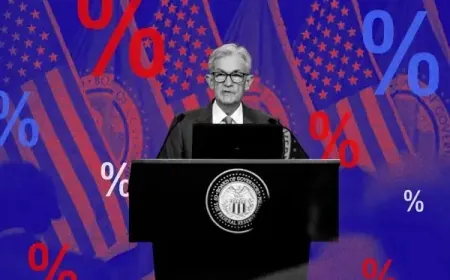Why Some Investors Are Buying Bitcoin Before the Year Ends
Bitcoin has dropped sharply since its October high, and some investors are buying again as new-coin supply has tightened after the halving. The update looks at what has changed in the market heading into year-end.

Bitcoin’s slide from its October peak has changed the tone of the market. The coin is down about 25% from its record, and that drop has pushed a lot of short-term traders to the sidelines. But away from the noise, some long-term investors are paying attention to the current levels for a few practical reasons — not hype, not slogans.
1. The recent drop flushed out fast money
Bitcoin’s latest fall wasn’t a slow decline — it was sharp and concentrated. Most of the selling came from newer buyers who entered during the rally and exited quickly once prices started slipping.
Data from major exchanges shows that:
-
short-term traders handled most of the selling pressure
-
long-term holders barely moved their coins
When this type of clean-out happens, price swings usually calm down in the weeks that follow. It doesn’t guarantee a rebound, but it often marks a point where fewer sellers remain.
Another detail:
In past years, Bitcoin has often stabilised or moved higher towards the end of the year because investors adjust portfolios before closing their books. That seasonal pattern is not a prediction, but it is part of why some investors are watching the current range.
2. The supply side looks tight after the halving
Earlier this year, Bitcoin’s mining reward was cut in half — an event known as the halving. This doesn’t grab headlines anymore, but it quietly changes daily supply.
Here’s what’s relevant now:
-
fewer new coins enter the market each day
-
miners have been selling less as revenue becomes more sensitive
-
long-term holders have moved coins off exchanges, reducing liquid supply
When supply stays tight, even small increases in demand can move prices faster than expected. Investors who study Bitcoin’s structure pay close attention to this, because similar tight-supply periods in past cycles eventually led to new rallies — not immediately, but gradually as demand returned.
3. Bitcoin’s long-term behaviour matters to experienced investors
People who have been around Bitcoin for years do not look at one month of price action — they study longer cycles. And those cycles show a very specific pattern: deep corrections followed by multi-year recoveries.
Examples from the last decade:
-
After the 2014 crash, Bitcoin recovered over the next two years.
-
After the 2018 crash, Bitcoin began rising again in 2019 and accelerated in 2020.
-
After the 2022 downturn, Bitcoin doubled through 2023.
None of these rebounds were quick or predictable, but they followed the same principle: long-term holders stayed put while supply on exchanges kept shrinking.
Today’s market looks similar. Exchange balances are near multi-year lows, which means fewer coins are available for trading. Investors who track these indicators see this as an important signal, not noise.
How investors are responding right now
Trading desks that follow Bitcoin closely say activity over the past two weeks shows a shift in behaviour. Volumes have thinned out on major exchanges, and most of the heavy selling earlier this month did not come from older wallets. That detail is important because long-held coins usually move only when confidence breaks in a major way — and that did not happen in this decline.
Spot ETF flows also show a mixed picture rather than a broad exit. Some issuers recorded outflows, but others posted small inflows on the same days, suggesting that capital did not leave the market entirely; it rotated between products. Analysts who track ETF behaviour say this pattern usually reflects caution, not capitulation.
On the mining side, reserves held by miners have remained stable since the halving. In past cycles, miners sold aggressively when market stress intensified. This time, their selling hasn’t spiked, which helps prevent additional downward pressure on the market.
These details don’t deliver a clear forecast, but they do highlight why some investors think the current period is different from earlier breakdowns. The market is quieter, but the structural signs that usually point to deeper trouble — miner stress, long-term wallets exiting, or broad ETF withdrawals — have not appeared so far.
Also Read: Bitcoin Could Reach $300,000 by 2030, According to New Research





























































